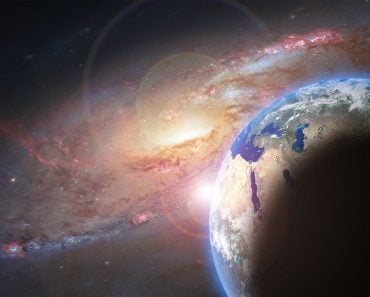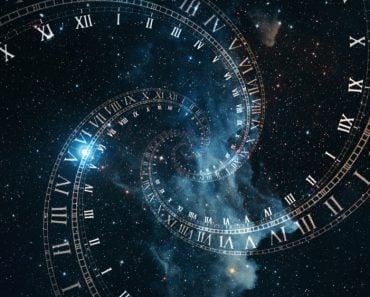Table of Contents (click to expand)
A wormhole is a proposed shortcut through spacetime. If wormholes exist, they are the result of a primordial microscopic wormhole that was expanded at the beginning of the universe, directly following the Big Bang. Many scientists and astronomers believe that wormholes are real.
Many scientists and astronomers believe that wormholes are real. Many things in astrophysics and theoretical physics have never been discovered, but, as they say, “the math works out”, meaning that they are possible. It is believed that if wormholes do exist, they are the result of a primordial microscopic wormhole that was expanded at the beginning of the universe, directly following the Big Bang.
Popular fiction and Hollywood seem to be obsessed with space and time. From recent blockbuster smashes like Interstellar and The Martian to the recent surge of incredible discoveries in our galaxy and beyond, all eyes seem to be on the vast ocean of space. While our search to understand the cosmos will never be finished, there are some puzzling propositions that have piqued our interest throughout history. One of the most famous examples of this is the idea of wormholes.
Some people refer to them as shortcuts through the universe, while others claim they may be a means of traveling through time. The fact is, they are fascinating and complicated and very confusing for some people, even if they have seen Interstellar.
Still confused? Well, let’s take a deeper look at one of the greatest mysteries – and most exciting suppositions – in the entire universe.
Recommended Video for you:
The Science Of A Wormhole

Without delving too far into the depths of the theory of general relativity and extremely high-level astrophysics, let’s try to understand a wormhole in its most basic form – a bridge. In fact, wormholes are more technically referred to as Einstein-Rosen bridges, as they were first proposed by Albert Einstein and Nathan Rosen in 1935. These bridges across spacetime are believed to be possible due to the bending effect that all massive objects have on spacetime.
The proposition is that two hugely massive objects (mouths) could bend spacetime to such a point that they would connect to one another via a bridge (throat). In theory, of course, this would significantly reduce travel time between those two points in the universe, which could be billions of lightyears away, or merely a few feet. Another, even more exceptional explanation, is that wormholes can not only connect two distant places in our present universe, but can actually link to entire other universes!
This throat could be a direct route, or a curved path that crosses through a higher dimension to the very distant “other side”. A curved two-dimensional plane is usually the best way to imagine this scenario. When two objects of significant mass bend that plane towards the opposite side, a connection could theoretically be made. We say “theoretically” because, despite the fact that wormholes fit within the principles of general relativity, no wormhole has yet been discovered.
Now you might be thinking, “If we’ve never found one, then how do we know that they exist?” Well, that’s a good point. Many things in astrophysics and theoretical physics have never been discovered, but, as they say, “the math works out”, meaning that they are possible. It is believed that if wormholes do exist, they are the result of a primordial microscopic wormhole that was expanded at the beginning of the universe, directly following the Big Bang.
Alright, so operating on the assumption that wormholes can and do exist, the question on everyone’s mind is…when can we start using them? Well, the peculiar and exotic nature of wormholes makes the idea of using them very far off in the future. There are a number of basic problems with finding, utilizing, or even exploiting wormholes.
The Problem With Wormholes
One of the most popular theories of how wormholes would form centers on the fact that a wormhole could form with two black holes as the “mouths” of the wormhole, and the unknown centers of those black holes, and possibly their singularities, forming the throat. The trouble with this proposition, of course, is the seeming impossibility of ever being able to study the interior of that wormhole, or ever see the opposite side, since nothing can escape the pull of gravity within a black hole – not even light itself.

Einstein-Rosen bridges present a real problem because they collapse and disappear extremely quickly, so detecting, identifying and studying them is nearly impossible. Furthermore, some theoreticians argue that wormholes might be happening on a microscopic scale, snapping in and out of existence at a quantum level of existence that we presently cannot observe.
That being said, whenever there is a problem or a roadblock in theoretical physics, someone thinks up a solution. If the primary problem with studying and using wormholes is their size and short duration, if that issue could be countered, then progress could be made. With that in mind, there is a theory that “exotic matter” could possibly stabilize a wormhole so that it could be used for a longer period of time, and provide more stability. Exotic matter is not the same thing as dark matter, but it does contain a huge amount of negative pressure and negative energy density. This type of matter has only been seen in limited, vacuum-state experiments, but if it were naturally or artificially added to a wormhole, it is theorized that the wormhole could be made wider – and even kept open – so that space travelers or equipment could be sent through.
Beyond that, it is predicted that there would be massive amounts of radiation at the mouth and singularity of certain wormholes, which would prove to be instantly fatal and would destroy anything that approached it. The intense gravitational forces would also likely rip any ship or human to shreds before they could pass through the wormhole. If a black hole can rip apart a star, I don’t want to imagine what it could do to a human.
Are There Different Types Of Wormholes?
There are a number of different types of wormholes that could exist, some of which we would want to use as humans, and others that would mean certain death. It’s probably important to know the difference.
Traversable Wormholes: This is the type of wormhole where human beings could travel through the spacetime bridge multiple times, in both directions, without coming to any harm. Exotic matter would be required for this type of wormhole to remain stable and open, as the exotic matter will resist the wormhole’s natural tendency to instantly contract.

Schwarzschild Wormholes: These are only traversable in one direction, and is an example of an Einstein-Rosen bridge. After being compacting to an incredible and finite density at the singularity, you would then perform the same process in reverse at the mouth of the other black hole.
Is Time Travel Possible Through A Wormhole?
Although the jury is still out on this question, since there are still so many unanswered mysteries when it comes to wormholes, the generally accepted belief is that they would not allow travelers to move back through time. To put it in simple terms, time travel appears to be possible within the boundaries of general relativity, but that doesn’t affect the realities of quantum physics.

While discovering a wormhole would be an incredible moment in the history of astronomy, the many other problems and idiosyncrasies of wormholes will likely prevent humans from testing any of our time-travel theories for decades to come.













